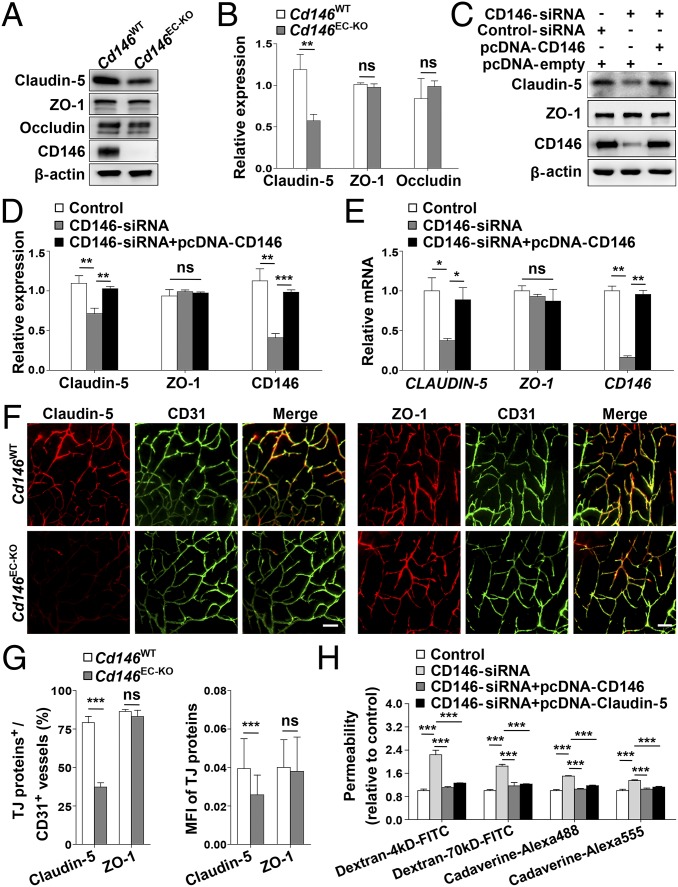Fig. 4.
CD146 in BECs up-regulates the expression of claudin-5. (A) Western blot analysis of the expression of claudin-5, ZO-1, and occludin in murine BECs purified from Cd146WT and Cd146EC-KO mice. (B) Quantification of the expression level of claudin-5, ZO-1, and occludin in murine BECs purified from Cd146WT and Cd146EC-KO mice. (C–E) hCMEC/D3 cells were transfected with CD146 siRNA or cotransfected with CD146 siRNA and CD146-expressing plasmids. The expression of claudin-5 and ZO-1 was analyzed by Western blotting (C and D) or real-time PCR (E). (F) Brain sections from cortex of mice at P5 were costained for CD31 (green) and claudin-5 or ZO-1 (red) and analyzed by LSFM after being optically cleared by using organic solvents. Representative MIPs of 40 virtual single slices from Cd146WT and Cd146EC-KO mice are shown. (Scale bars: 50 μm.) (G) Quantification of the number of CD31+ capillaries expressing claudin-5 or ZO-1 and the MFI of claudin-5 or ZO-1 in CD31+ capillaries in cortex showed a reduction of claudin-5 in Cd146EC-KO mice compared with Cd146WT mice. (H) hCMEC/D3 cells were transfected with CD146 siRNA or cotransfected with CD146 siRNA and CD146-expressing plasmid or with CD146 siRNA and claudin-5–expressing plasmid, respectively. The paracellular permeability was assessed by tracers of different sizes of fluorescent dextrans (4 kDa and 70 kDa) and cadaverine (640 Da and 950 Da; n = 10 per group; *P < 0.05, **P < 0.01, and ***P < 0.001). Data are from one experiment representative of three independent experiments with eight mice per genotype (B) or five mice per genotype, at least eight MIPs per mouse, and five random fields per MIP (G).

